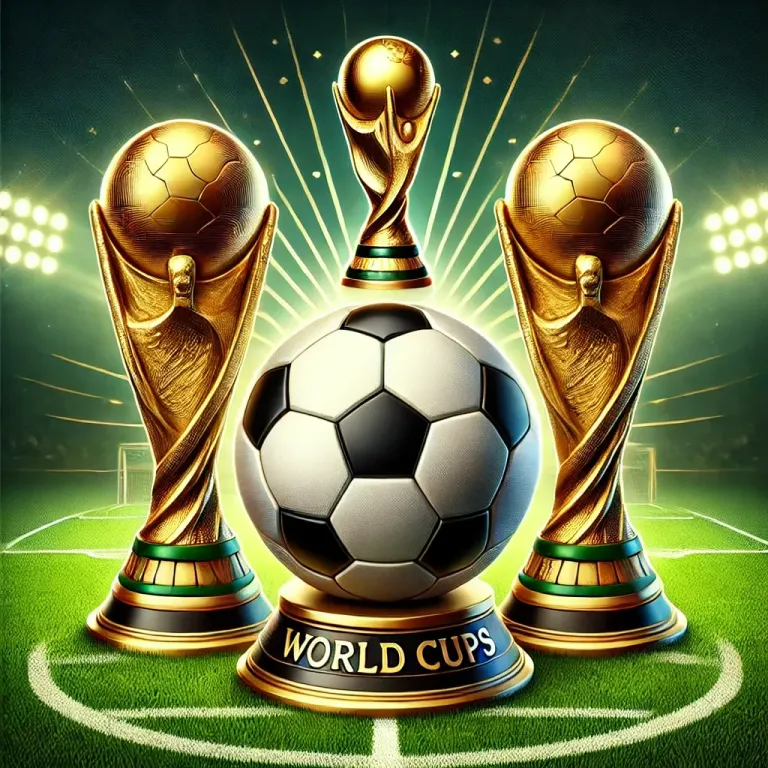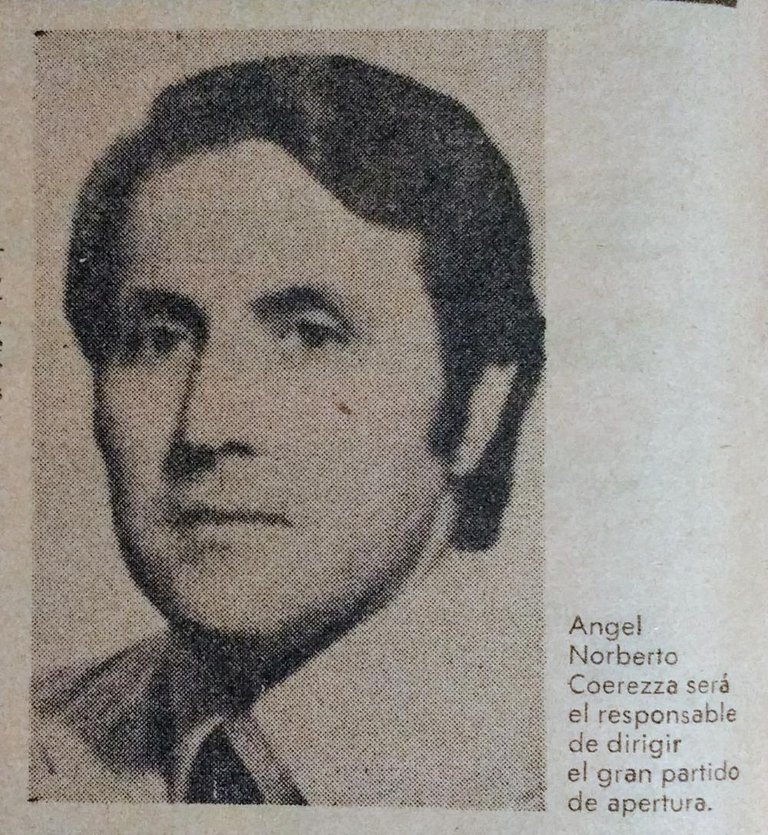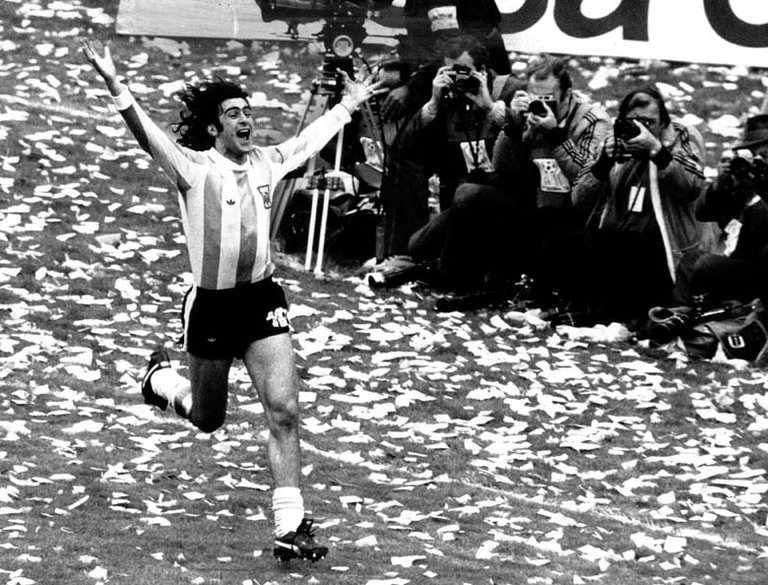
Imagen diseñada utilizando ChatGPT
En una fría tarde del invierno recién iniciado en Buenos Aires, disputábamos el partido final del mundial de 1978 frente a la temida Naranja Mecánica que 4 años antes había vendido cara su derrota ante la poderosa Alemania Federal. Cruel destino para el país que todavía mantenía la denominación de Holanda y que luego lo cambiaría por el de Paises Bajos, nuevamente le tocaba una final ante el local y en esta oportunidad no mostraba el enorme poderío de otrora, faltaba su estrella indiscutida: Johan Cruyff.
Por nuestra parte el equipo se presentaba sólido y confiable, con un Mario Alberto Kempes en el pináculo de su carrera; fuerza, velocidad, calidad, poder de gol, todas características que lo llevaron a ser elegido el mejor jugador y goleador de ese mundial, dos goles en la final y artífice del tercero que terminó convirtiendo su compañero de ataque, el letal centrodelantero de Independiente de Avellaneda, Daniel Bertoni.
Y Argentina logró su primera estrella ganando 3 a 1 en el alargue.
El árbitro de aquella final, el italiano Sergio Gonella dio el silbatazo final y la euforia se desató, primero en el estadio y luego en todo el país, la selección nacional se llenaba de gloria y alcanzaba el mayor hito del fútbol mundial.

Esa noche mientras el obelisco de la ciudad de Buenos Aires recibía miles y miles de simpatizantes pletórico de alegría y euforia, en un lujoso hotel de la ciudad se celebraba la cena de gala presidida por el entonces presidente de la FIFA, el brasileño Joao Havelange, a su lado, el vicepresidente de ese organismo y presidente de la AFA, Julio Humberto Grondona y el árbitro del partido inaugural Ángel Norberto Coerezza departían amablemente con todos los comensales, en un determinado momento surgió la idea de conseguir el balón con el que se había disputado la final para que fuera exhibido en las vitrinas del museo de la AFA.
Consultado el árbitro italiano se negó rotundamente a entregarlo, el balón era de su propiedad, así había sido hasta el momento y no tenía ninguna intención de devolverlo. La pelota de esa final viajó a Italia y pasó a ser parte de las pertenencias y trofeos de Gonella, seguramente el más importante de toda su carrera como árbitro internacional.
Años después, en una visita al museo de la Asociación Uruguaya de Fútbol, el por entonces famosísimo relator de fútbol argentino, José María Muñoz junto al árbitro Coerezza, vieron en las vitrinas un verdadero tesoro, la pelota del "maracanazo", el balón con el cual Uruguay venció a Brasil en el estadio Maracaná adjudicándose de esa manera su segunda estrella.
Nuevamente surgió la idea de recuperar el balón de la final de 1978, inmediatamente se pusieron en acción.

En 1982, en ocasión de un amistoso entre Italia y Argentina disputado en el viejo continente, Muñoz y Coerezza se entrevistaron con el presidente de la Federación Italiana de Fútbol, en aquel momento Artemio Franchi y le solicitaron interceder ante Gonella para recuperar ese preciado trofeo para las vitrinas del fútbol argentino. El ex árbitro de la final de 1978 accedió finalmente a entregar el balón a cambio de 3 pelotas "tango" que fueron diseñadas especialmente para la disputa de ese mundial y un portafolios de cuero argentino.
De esa forma, el balón de la final de aquel recordado mundial, pasó a manos de la AFA y hoy se lo puede apreciar junto a las 3 copas del mundo obtenidas en 1978, 1986 y 2022.

Un recuerdo invaluable recuperado gracias al compromiso de algunos de los más extraordinarios personajes de nuestra historia deportiva.
And the ball, where is it?
On a cold afternoon in the winter that had just begun in Buenos Aires, we were playing the final match of the 1978 World Cup against the feared Clockwork Orange, who four years earlier had lost dearly to the powerful West Germany. It was a cruel fate for the country that still had the name Holland and would later change it to the Netherlands, once again had to face the local team in the final, and this time it did not show the enormous power it had once had, its undisputed star was missing: Johan Cruyff.
For our part, the team was solid and reliable, with Mario Alberto Kempes at the pinnacle of his career; strength, speed, quality, and goal-scoring power, all characteristics that led him to be chosen as the best player and scorer of the World Cup, with two goals in the final and the architect of the third, which was scored by his attacking partner, the lethal center forward of Independiente de Avellaneda, Daniel Bertoni.
And Argentina achieved its first star by winning 3-1 in extra time.
The referee of that final, the Italian Sergio Gonella, blew the final whistle and euphoria broke out, first in the stadium and then throughout the country, the national team was filled with glory and achieved the greatest feat in world football.
That night, while the obelisk in the city of Buenos Aires received thousands and thousands of supporters filled with joy and euphoria, a gala dinner was being held in a luxurious hotel in the city presided over by the then president of FIFA, the Brazilian Joao Havelange, at his side, the vice president of that organization and president of the AFA, Julio Humberto Grondona and the referee of the opening match, Ángel Norberto Coerezza, chatted amiably with all the diners. At a certain point, the idea arose of obtaining the ball with which the final had been played so that it could be exhibited in the display cases of the AFA museum.
When asked, the Italian referee flatly refused to hand it over, the ball was his property, that was how it had been until then and he had no intention of handing it over. The ball from that final traveled to Italy and became part of Gonella's belongings and trophies, surely the most important of his entire career as an international referee.
Years later, on a visit to the Uruguayan Football Association museum, the then-famous Argentine football commentator, José María Muñoz, together with the referee Coerezza, saw in the display cases a real treasure, the "maracanazzo" ball, the ball with which Uruguay beat Brazil in the Maracaná stadium, thus keeping its second star.
The idea of recovering the ball from the 1978 final arose again, and they immediately sprang into action.
In 1982, on the occasion of a friendly match between Italy and Argentina played on the old continent, Muñoz and Coerezza met with the president of the Italian Football Federation, at that time Artemio Franchi, and asked him to intercede with Gonella to recover that precious trophy for the Argentine football showcases. The former referee of the 1978 final finally agreed to hand over the ball in exchange for 3 "tango" balls specially designed for the dispute of that World Cup and an Argentine leather briefcase.
In this way, the ball from the final of that memorable World Cup passed into the hands of the AFA and today it can be seen alongside the 3 World Cups won in 1978, 1986, and 2022.
A priceless memory recovered thanks to the commitment of some of the most extraordinary characters in our sporting history.
Héctor Gugliermo
@hosgug